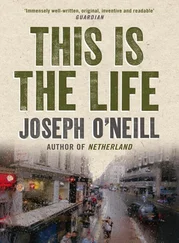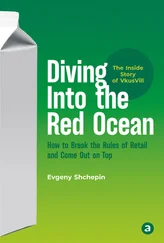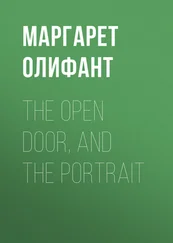Joseph J. Torres - Life in the Open Ocean
Здесь есть возможность читать онлайн «Joseph J. Torres - Life in the Open Ocean» — ознакомительный отрывок электронной книги совершенно бесплатно, а после прочтения отрывка купить полную версию. В некоторых случаях можно слушать аудио, скачать через торрент в формате fb2 и присутствует краткое содержание. Жанр: unrecognised, на английском языке. Описание произведения, (предисловие) а так же отзывы посетителей доступны на портале библиотеки ЛибКат.
- Название:Life in the Open Ocean
- Автор:
- Жанр:
- Год:неизвестен
- ISBN:нет данных
- Рейтинг книги:5 / 5. Голосов: 1
-
Избранное:Добавить в избранное
- Отзывы:
-
Ваша оценка:
- 100
- 1
- 2
- 3
- 4
- 5
Life in the Open Ocean: краткое содержание, описание и аннотация
Предлагаем к чтению аннотацию, описание, краткое содержание или предисловие (зависит от того, что написал сам автор книги «Life in the Open Ocean»). Если вы не нашли необходимую информацию о книге — напишите в комментариях, мы постараемся отыскать её.
Life in the Open Ocean: The Biology of Pelagic Species
Life in the Open Ocean: The Biology of Pelagic Species
Life in the Open Ocean — читать онлайн ознакомительный отрывок
Ниже представлен текст книги, разбитый по страницам. Система сохранения места последней прочитанной страницы, позволяет с удобством читать онлайн бесплатно книгу «Life in the Open Ocean», без необходимости каждый раз заново искать на чём Вы остановились. Поставьте закладку, и сможете в любой момент перейти на страницу, на которой закончили чтение.
Интервал:
Закладка:
22 Donnelly, J. and Torres, J.J. (1988). Oxygen consumption of midwater fishes and crustaceans from the eastern Gulf of Mexico. Marine Biology 97: 483–494.
23 Drazen, J.C. and Seibel, B.A. (2007). Depth‐related trends in metabolism of benthic and benthopelagic deep‐sea fishes. Limnology and Oceanography 52: 2306–2316.
24 Ebbecke, U. (1944). Lebensvorgange unter der Einwirking hoher drucke. Journal of Biological Chemistry 45: 34–183.
25 Eno, C.N. (1994). The morphometrics of cephalopod gills. Journal of the Marine Biological Association of the United Kingdom 74: 687–706.
26 Flugel, H. and Schlieper, C. (1970). The effects of pressure on marine invertebrates and fishes. In: High Pressure Effects on Cellular Processes (ed. A.M. Zimmerman). New York and London: Academic Press.
27 Fontaine, M. (1928). Les forte pressions et la consommation d'oxygene de quelques animaux marines. Influences de la taille de l'animal. Comptes Rendus des Séances et Memoires de la Societe de Biologie 99: 1789–1790.
28 Fry, F.E.J. and Hochachka, P.W. (1970). Fish. In: Comparative Physiology of Thermoregulation (ed. G.C. Whittow). New York: Academic Press.
29 Gibbs, A.G. (1997). Biochemistry at depth. In: Deep‐Sea Fishes (eds. D.J. Randall and A.P. Farrell). San Diego: Academic Press.
30 Gibbs, A.G. and Somero, G.N. (1989). Pressure adaptation of Na+, K+‐ATPase in gills of marine teleosts. Journal of Experimental Biology 143: 475–492.
31 Gibbs, A.G. and Somero, G.N. (1990). Pressure adaptation of teleost gill Na+,K+‐adenosine triphosphatase: role of the lipid and protein moieties. Journal of Comparative Physiology B 160: 431–439.
32 Gjøsaeter, J. (1984). Mesopelagic fish: a large potential resource in the Arabian Sea. Deep‐Sea Research 31: 1019–1035.
33 Graves, J.E. and Somero, G.N. (1982). Electrophoretic and functional enzymic evolution in four species of eastern Pacific barracudas from different thermal environments. Evolution 36: 97–106.
34 Grundfest, H. (1936). Effects of hydrostatic pressures upon the excitability, the recovery, and the potential sequence of frog nerve. Cold Spring Harbor Symposia on Quantitative Biology 5: 179–187.
35 Hazel, J.R. and Carpenter, R. (1985). Rapid changes in the phospholipid composition of gill membranes during thermal acclimation of the rainbow trout, Salmo gairdneri. Journal of Comparative Physiology B 155: 597–602.
36 Hazel, J.R. and Williams, E.E. (1990). The role of alterations in membrane lipid composition in enabling physiological adaptation of organisms to their physical environment. Progress in Lipid Research 29: 167–227.
37 Hitchcock, G.L., Wiebinga, C., and Ortner, P.B. (1997). CTD hydrographic data from the Global Ocean Ecosystem Dynamics (GLOBEC) Indian Ocean Cruises. Technical Report 97‐006. University of Miami.
38 Hochachka, P.W. (1980). Living Without Oxygen. Cambridge: Harvard University Press.
39 Hochachka, P.W. and Guppy, M. (1987). Metabolic Arrest and the Control of Biological Time. Cambridge: Harvard University Press.
40 Hochachka, P.W. and Somero, G.N. (1973). Strategies of Biochemical Adaptation. Philadelphia: Saunders.
41 Hochachka, P.W. and Somero, G.N. (1984). Biochemical Adaptation. Princeton University Press: Princeton.
42 Hochachka, P.W. and Somero, G.N. (2002). Biochemical Adaptation: Mechanism and Process in Physiological Evolution. New York: Oxford University Press.
43 Kawall, H.G., Torres, J.J., Sidell, B.D., and Somero, G.N. (2002). Metabolic cold adaptation in Antarctic fishes: evidence from enzymatic activities of brain. Marine Biology 140: 279–286.
44 Longhurst, A.R. (1998). Ecological Geography of the Sea. London: Academic Press.
45 Madan, J.J. and Wells, M.J. (1996). Why squid breathe easy. Nature 380: 590.
46 Meek, R.P. and Childress, J.J. (1973). Respiration and the effect of pressure in the pelagic fish Anoplogaster cornuta (Beryciformes). Deep‐Sea Research 20: 1111–1118.
47 Menzies, R.J. and Wilson, J.B. (1961). Preliminary field experiments on the relative importance of pressure and temperature on the penetration of marine invertebrates into the deep‐sea. Oikos 12: 302–309.
48 Murray, C.N. and Riley, J.P. (1969). The solubility of gases in distilled water and sea water‐II. Oxygen. Deep‐Sea Research 16: 311–320.
49 Napora, T.A. (1964). The effect of hydrostatic pressure on the prawn, Systellaspis debilis. Narragansett Marine Laboratory Occasional Publication 2: 92–94.
50 Newell, R.C. and Northcroft, H.R. (1967). Metabolic independence of temperature over limited ranges in poikilotherms. Journal of Zoology 151: 277–298.
51 Place, A.R. and Powers, D.A. (1979). Genetic variation and relative catalytic efficiencies: lactate dehydrogenase B allozymes of Fundulus heteroclitus. Proceedings of the National Academy of Sciences USA 76: 2354–2358.
52 Precht, H. (1958). Theory of temperature adaptation in cold‐blooded animals. In: Physiological Adaptation (ed. C.L. Prosser). Washington, DC: American Physiological Society.
53 Prosser, C.L. (1973). Comparative Animal Physiology. Philadelphia: Saunders.
54 Quetin, L.B. and Childress, J.J. (1976). Respiratory adaptations of Pleuroncodes planipes Stimpson to its environment off Baja California. Marine Biology 38: 327–334.
55 Rabalais, N.N., Wiseman, W.J., and Turner, R.E. (1994). Comparison of continuous records of near‐bottom dissolved oxygen from the hypoxia zone along the Louisiana coast. Estuaries 17: 850–861.
56 Regnard, P. (1884). Effect des hautes pressions sur les animaux marins. Comptes Rendus des Séances et Memoires de la Societe de Biologie 36: 394–395.
57 Regnard, P. (1891). Recherches experimentales sur les conditions physiques de la vie dans les eaux. Paris: Masson.
58 Sanders, N.K. and Childress, J.J. (1990). Adaptations to the deep‐sea oxygen minimum layer: oxygen binding by the hemocyanin of the bathypelagic mysid, Gnathophausia ingens Dohrn. Biological Bulletin 178: 286–294.
59 Scholander, P.F., Flagg, W., Walter, V., and Irving, L. (1953). Climatic adaptation in arctic and tropical poikilotherms. Physiological Zoology 26: 67–92.
60 Seibel, B.A. (2011). Critical oxygen levels and metabolic suppression in oceanic oxygen minimum zones. Journal of Experimental Biology 214: 326–336.
61 Seibel, B.A. and Drazen, J.C. (2007). The rate of metabolism in marine animals: environmental constraints, ecological demands and energetic opportunities. Philosophical Transactions of the Royal Society B 362: 1–18.
62 Seibel, B.A., Thuesen, E.V., Childress, J.J., and Gorodezky, L.A. (1997). Decline in pelagic cephalopod metabolism with habitat depth reflects differences in locomotory efficiency. Biological Bulletin 192: 262–278.
63 Seibel, B.A., Chausson, F., Lallier, F.H. et al. (1999). Vampire blood: respiratory physiology of the vampire squid (Cephalopoda:Vampyromorpha) in relation to the oxygen minimum layer. Experimental Biology Online 4: 1–10.
64 Seibel, B.A., Schneider, J.L., Kaartvedt, S. et al. (2016). Hypoxia tolerance and metabolic suppression in oxygen minimum zone euphausiids: implications for ocean deoxygenation and biogeochemical cycles. Integrative and Comparative Biology 56: 510–523.
65 Sidell, B.D., Wilson, F.R., Hazel, J., and Prosser, C.L. (1973). Time course of thermal acclimation in goldfish. Journal of Comparative Physiology 84: 119–127.
66 Siebenaller, J.F. and Somero, G.N. (1979). Pressure adaptive differences in the binding properties of the muscle‐type (M4) lactate dehydrogenases of shallow‐ and deep‐living marine fishes. Journal of Comparative Physiology 129: 295–300.
67 Smith, K.L. and Brown, N.O. (1983). Oxygen consumption of pelagic juveniles and demersal adults of the deep‐sea fish Sebastolobus altivelis, measured at depth. Science 184: 72–73.
Читать дальшеИнтервал:
Закладка:
Похожие книги на «Life in the Open Ocean»
Представляем Вашему вниманию похожие книги на «Life in the Open Ocean» списком для выбора. Мы отобрали схожую по названию и смыслу литературу в надежде предоставить читателям больше вариантов отыскать новые, интересные, ещё непрочитанные произведения.
Обсуждение, отзывы о книге «Life in the Open Ocean» и просто собственные мнения читателей. Оставьте ваши комментарии, напишите, что Вы думаете о произведении, его смысле или главных героях. Укажите что конкретно понравилось, а что нет, и почему Вы так считаете.












